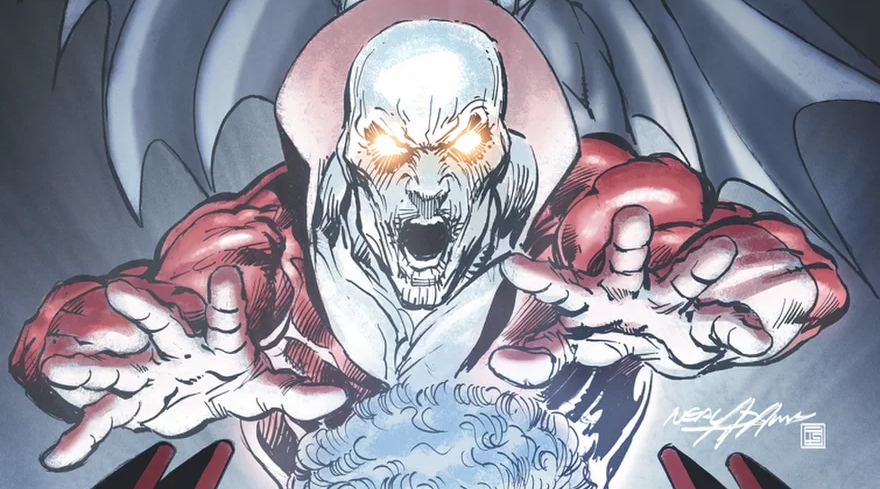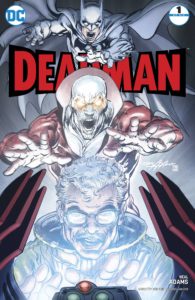
Deadman #1
Writer: Neal Adams
Artist: Neal Adams
Letterer: Clem Robins
Cover Artist: Neal Adams
Publisher: DC Comics
A review by Nico Sprezzatura
 Some fan favorite characters just can’t sustain an ongoing series in the current climate of the comic book industry. This is especially true of niche characters who aren’t called “Batman” or “Spider-Man,” and that’s a shame because some of the most interesting figures in these vast shared universes live on the periphery. That’s where the limited series comes in: short-run titles meant to showcase a character or concept that has a beginning, middle, and end. This week’s Deadman #1 is the latest in a string of limited series featuring some of DC’s most esoteric personalities.
Some fan favorite characters just can’t sustain an ongoing series in the current climate of the comic book industry. This is especially true of niche characters who aren’t called “Batman” or “Spider-Man,” and that’s a shame because some of the most interesting figures in these vast shared universes live on the periphery. That’s where the limited series comes in: short-run titles meant to showcase a character or concept that has a beginning, middle, and end. This week’s Deadman #1 is the latest in a string of limited series featuring some of DC’s most esoteric personalities.
So, is it worth your while? Well, that depends on the kind of superhero stories you like. After a few reads of Deadman #1, I can safely determine that this comic isn’t for me. It’s very old school; I can easily imagine this being published in the seventies. Given that Deadman is written and drawn by Neal Adams —who is responsible for some of the more well-known stories featuring the character, in that exact era— it’s not surprising.
From a narrative standpoint, Deadman #1 kinda just drops you into the middle of things without much setup or explanation of who Boston Brand (AKA Deadman) is, which can be a problem for those unfamiliar with the character. His deal is fairly digestible: he’s the spirit of a deceased man who can inhabit the bodies of the living, but the context around the story introduced here is a bit murky. It’s not clear if it’s happening in the current “Rebirth” era of the DC Universe. I assume this isn’t necessarily the case, but there’s little to determine that either way. I also have to admit I’m not totally sure what story Adams is telling here. I know it involves Commissioner Gordon and Batman to some respect, but, other than that, it kinda went over my head a bit. It might come together in future issues but for now it didn’t really track for me.
Visually, Deadman is also going to be an issue for some who, like myself, prefer contemporary comic art that’s slicker and more refined. There’s nothing objectively bad with Adams’ aesthetic, obviously. It’s just not to my taste. Those who enjoy his work are likely to find nothing wrong with it, so ultimately your mileage may vary. There’s also a weird meta-comparison you can make between this new Deadman series and last year’s Deadman: Dark Mansion of Forbidden Love by Sarah Vaughan and Lan Medina, which took the character in a decidedly different direction. Whereas Vaughan and Medina’s tale was more inspired by romance and gothic horror, Adams’ Deadman is a slice of Silver Age superheroics. Dark Mansion was also very forward-thinking in its approach towards gender identity, and here there doesn’t seem to be as much social commentary going on here. Again, this is not necessarily a knock on the quality of Adams’ work; it’s just intended for a different audience.
Outside of Adams’ contributions to the art and story, letterer Clem Robins had his work cut out for him with the former’s script — it’s very wordy. In true Silver Age form, much of the script is relegated to thought bubbles. I kinda enjoyed that aspect; thought bubbles have fallen out of fashion in recent times, so it’s endearingly quaint whenever it shows up. Overall, the lettering is fine, if a bit busy.
The Verdict:
Depends. For fans of classic superhero comics, Deadman #1 is probably right on the money to buy. Otherwise, you can afford to skip it.

![[INTERVIEW] CHAD CORRIE ON WRITING, FANTASY, AND THE WIZARD KING TRILOGY](https://geekd-out.com/wp-content/uploads/2022/09/2476E3EA-7DB6-4E17-9EA6-7F6F055FC943-150x150.jpeg)

![[REVIEW] TORRENT #1](https://geekd-out.com/wp-content/uploads/2023/02/torrent-1-feat-150x150.jpg)